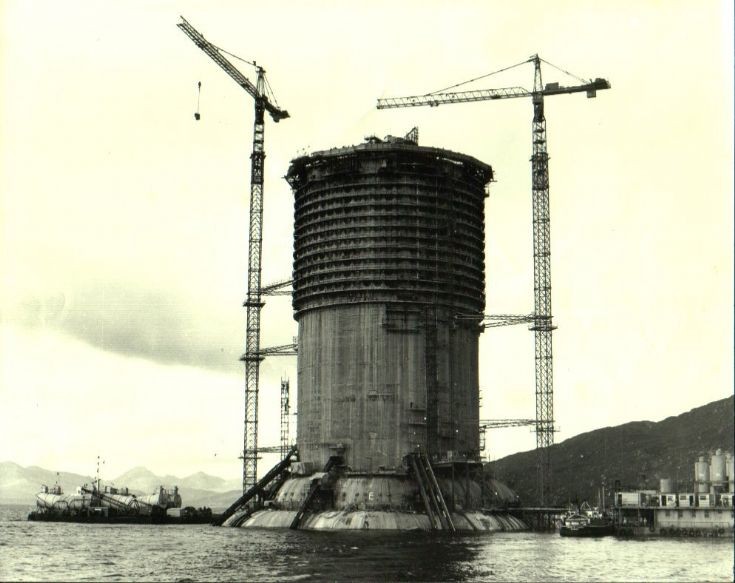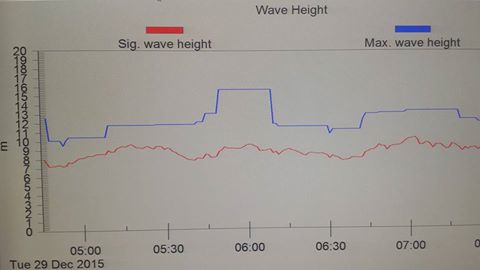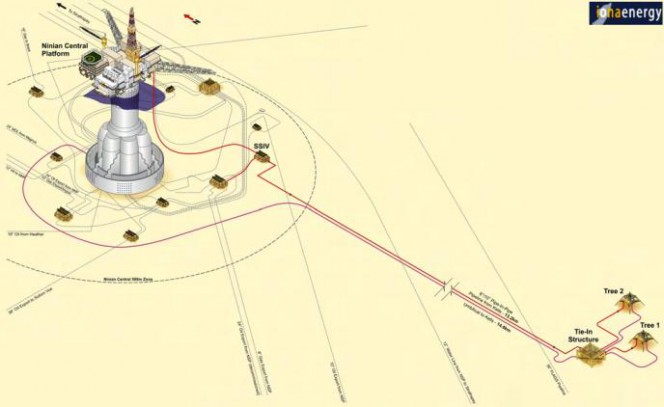It looks like you're using an Ad Blocker.
Please white-list or disable AboveTopSecret.com in your ad-blocking tool.
Thank you.
Some features of ATS will be disabled while you continue to use an ad-blocker.
3
share:
This is the beast before the topsides were fitted. 
It cracked during construction, they just plastered over the cracks and carried on. It's called the Ninian Central Platform. I've started other threads about it.
www.facebook.com...


I'm wondering how platform wobble is measured, and if it's got worse over the years? Does anyone have experience of concrete platform wobble?

It cracked during construction, they just plastered over the cracks and carried on. It's called the Ninian Central Platform. I've started other threads about it.
www.facebook.com...
No wonder we are wobbling a few 16 mtr waves passing through. Always feel for the crews of the standby vessels in this weather

Off our graph scale now waves above 20mtr at times now with 9 to 10 mtr steady waves

I'm wondering how platform wobble is measured, and if it's got worse over the years? Does anyone have experience of concrete platform wobble?
edit on 25 1 2016 by Kester because: punctuation
a reply to: Kester
Normally "wobble" or flex is engineered into structures. I've been in tall buildings on windy days and seen the water in the toilet sloshing around.
Those charts don't show how much it is wobbling though.
Normally "wobble" or flex is engineered into structures. I've been in tall buildings on windy days and seen the water in the toilet sloshing around.
Those charts don't show how much it is wobbling though.
edit on 1/25/2016 by Phage because: (no reason given)
a reply to: Kester
Bearing surfaces. Articulated joints.
But if someone designed a seaborne platform for the North Sea to be completely rigid, it was a bad idea. Because the ocean is somewhat of an irresistible force.
Bearing surfaces. Articulated joints.
But if someone designed a seaborne platform for the North Sea to be completely rigid, it was a bad idea. Because the ocean is somewhat of an irresistible force.
edit on 1/25/2016 by Phage because: (no reason given)
a reply to: Phage
It's possible the cyclic forces have over time changed conditions under the platform and the whole thing is rocking rather than flex in the structure.
The holes in the top part of the outer wall allow water through, easing the wave force.
"A 14 m wide central shaft is surrounded by a breakwater wall ("Jarlin Wall") 45 m in diameter and 1.6 m thick pierced with 15m diameter holes." www.writeopinions.com...
It's possible the cyclic forces have over time changed conditions under the platform and the whole thing is rocking rather than flex in the structure.
The holes in the top part of the outer wall allow water through, easing the wave force.
"A 14 m wide central shaft is surrounded by a breakwater wall ("Jarlin Wall") 45 m in diameter and 1.6 m thick pierced with 15m diameter holes." www.writeopinions.com...
originally posted by: Kester
This is the beast before the topsides were fitted.
It cracked during construction, they just plastered over the cracks and carried on. It's called the Ninian Central Platform. I've started other threads about it.
www.facebook.com...
No wonder we are wobbling a few 16 mtr waves passing through. Always feel for the crews of the standby vessels in this weather
Off our graph scale now waves above 20mtr at times now with 9 to 10 mtr steady waves
I'm wondering how platform wobble is measured, and if it's got worse over the years? Does anyone have experience of concrete platform wobble?
I'm not an expert on concrete but when it cracks, how serious it is, generally depends on the depth and the length of the crack and the reason it cracked.
I worked in the Transamerica building, I guess it's the AT&T center now.
It's built on rollers, and the lights are hung on hinges --- something I can attest to --- as they swing during an earthquake.
It's built on rollers, and the lights are hung on hinges --- something I can attest to --- as they swing during an earthquake.
a reply to: Azureblue
They are enormous vertical cracks I think in the inside of the lower part of outer wall. I saw photographs of the cracks briefly in 1979, it's a struggle to remember exactly what I was shown. I think the reason was pouring the concrete too fast and the resulting heat during curing.
I'm wondering are the cracks getting worse and the platform is slowly disintegrating? Has the platform always wobbled in heavy seas to the extent it does now? Or is the whole structure rocking on an unevenly compressed seabed?
They are enormous vertical cracks I think in the inside of the lower part of outer wall. I saw photographs of the cracks briefly in 1979, it's a struggle to remember exactly what I was shown. I think the reason was pouring the concrete too fast and the resulting heat during curing.
I'm wondering are the cracks getting worse and the platform is slowly disintegrating? Has the platform always wobbled in heavy seas to the extent it does now? Or is the whole structure rocking on an unevenly compressed seabed?
a reply to: Annee
The WTC towers had big rubber blocks to dampen the movement. But this oil platform is essentially one lump of concrete sitting on the seabed. The proportions are very different from a tower block, like a short tree stump on a huge root rather than a tree trunk. Given the materials and the proportions I have difficulty imagining much in the way of flex. The big question is has it always wobbled to this extent or is it getting worse? The amount of money resting on that question is bound to affect the ease with which we get an answer.
The WTC towers had big rubber blocks to dampen the movement. But this oil platform is essentially one lump of concrete sitting on the seabed. The proportions are very different from a tower block, like a short tree stump on a huge root rather than a tree trunk. Given the materials and the proportions I have difficulty imagining much in the way of flex. The big question is has it always wobbled to this extent or is it getting worse? The amount of money resting on that question is bound to affect the ease with which we get an answer.
originally posted by: Kester
a reply to: Azureblue
They are enormous vertical cracks I think in the inside of the lower part of outer wall. I saw photographs of the cracks briefly in 1979, it's a struggle to remember exactly what I was shown. I think the reason was pouring the concrete too fast and the resulting heat during curing.
I'm wondering are the cracks getting worse and the platform is slowly disintegrating? Has the platform always wobbled in heavy seas to the extent it does now? Or is the whole structure rocking on an unevenly compressed seabed?
Could be any or a combo of all but it certainly don't sound too good.
While I suppose it wasn't done on the construction of this platform, good quality control requires a slump test to be performed and also a crush test performed on a sample and test piece, taken from each batch of concrete.
This should come out in an investigation and inquest as something that either something that was done or was not done if something terrible happens.
originally posted by: Kester
a reply to: Annee
The WTC towers had big rubber blocks to dampen the movement. But this oil platform is essentially one lump of concrete sitting on the seabed. The proportions are very different from a tower block, like a short tree stump on a huge root rather than a tree trunk. Given the materials and the proportions I have difficulty imagining much in the way of flex. The big question is has it always wobbled to this extent or is it getting worse? The amount of money resting on that question is bound to affect the ease with which we get an answer.
Not something I want to be on.
Doesn't sound good.
a reply to: Azureblue
I had a message from someone whose father tested concrete batches on the Ninian. I'm sure he did his best, but I have heard of concrete testers, and others, being told to ignore bad results and approve dodgy batches.
The Ninian has stressed cables running around it. The grout pumped into the voids around these cables was found not to have fully filled the voids. I guess the vertical cracks have allowed seawater to enter many of these channels and corrode sections of cable.
If something terrible happens everyone will realise, as with the WTC towers, the essential paperwork needed for the investigation went missing shortly after construction was completed.
They knew.
I had a message from someone whose father tested concrete batches on the Ninian. I'm sure he did his best, but I have heard of concrete testers, and others, being told to ignore bad results and approve dodgy batches.
The Ninian has stressed cables running around it. The grout pumped into the voids around these cables was found not to have fully filled the voids. I guess the vertical cracks have allowed seawater to enter many of these channels and corrode sections of cable.
If something terrible happens everyone will realise, as with the WTC towers, the essential paperwork needed for the investigation went missing shortly after construction was completed.
They knew.
edit on 25 1 2016 by Kester because: spacing
edit on 25 1 2016 by Kester because: spacing
edit on 25 1 2016 by
Kester because: (no reason given)
It's so close to shore, why didn't they just put it on shore? I suppose on shore you would be able to see the pollution instead of it filtering
slowly into the water unnoticed.
a reply to: rickymouse
No, it was floated far out to sea. It's sitting on the seabed with a maze of pipelines around it.
No, it was floated far out to sea. It's sitting on the seabed with a maze of pipelines around it.

new topics
-
Planned Parenthood Targets Black Neighborhoods
Social Issues and Civil Unrest: 47 minutes ago -
Who could it beeee now?
New World Order: 3 hours ago -
The Russian Vostok complex has been put into operation in Antarctica
Science & Technology: 4 hours ago -
Letitia James tells judge to Reject Trumps $175 Million Bond
2024 Elections: 4 hours ago -
Tucker Carlson UFOs are piloted by spiritual entities with bases under the ocean and the ground
Aliens and UFOs: 4 hours ago -
Hello from burritocat
Introductions: 6 hours ago -
An Apology From the Dunderbeck Sausage Company
Music: 8 hours ago -
Tucker on Joe Rogan talking Kona Blue and UFOs
Aliens and UFOs: 9 hours ago -
Remember These Attacks When President Trump 2.0 Retribution-Justice Commences.
2024 Elections: 9 hours ago -
Predicting The Future: The Satanic Temple v. Florida
Conspiracies in Religions: 9 hours ago
top topics
-
Michigan school district cancels lesson on gender identity and pronouns after backlash
Education and Media: 14 hours ago, 10 flags -
The Russian Vostok complex has been put into operation in Antarctica
Science & Technology: 4 hours ago, 9 flags -
WF Killer Patents & Secret Science Vol. 1 | Free Energy & Anti-Gravity Cover-Ups
General Conspiracies: 11 hours ago, 8 flags -
Pentagon acknowledges secret UFO project, the Kona Blue program | Vargas Reports
Aliens and UFOs: 16 hours ago, 7 flags -
Remember These Attacks When President Trump 2.0 Retribution-Justice Commences.
2024 Elections: 9 hours ago, 7 flags -
Boston Dynamics say Farewell to Atlas
Science & Technology: 16 hours ago, 6 flags -
Israel attacking Iran again.
Middle East Issues: 13 hours ago, 5 flags -
Letitia James tells judge to Reject Trumps $175 Million Bond
2024 Elections: 4 hours ago, 5 flags -
Who could it beeee now?
New World Order: 3 hours ago, 4 flags -
Hurt my hip; should I go see a Doctor
General Chit Chat: 12 hours ago, 3 flags
active topics
-
911 emergency lines are DOWN across multiple states
Breaking Alternative News • 9 • : mysterioustranger -
In an Historic First, In N Out Burger Permanently Closes a Location
Mainstream News • 13 • : crayzeed -
Planned Parenthood Targets Black Neighborhoods
Social Issues and Civil Unrest • 6 • : FlyersFan -
Are you ready for the return of Jesus Christ? Have you been cleansed by His blood?
Religion, Faith, And Theology • 23 • : TheGoodNews -
Israel attacking Iran again.
Middle East Issues • 51 • : JAY1980 -
The Russian Vostok complex has been put into operation in Antarctica
Science & Technology • 11 • : stonerwilliam -
George Knapp AMA on DI
Area 51 and other Facilities • 30 • : BeTheGoddess2 -
Hurt my hip; should I go see a Doctor
General Chit Chat • 16 • : mysterioustranger -
The Democrats Take Control the House - Look what happened while you were sleeping
US Political Madness • 80 • : ImagoDei -
Thousands Of Young Ukrainian Men Trying To Flee The Country To Avoid Conscription And The War
Other Current Events • 60 • : Xtrozero
3
